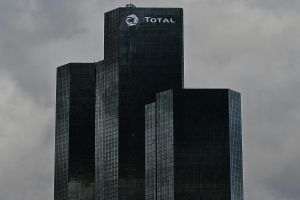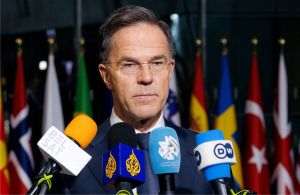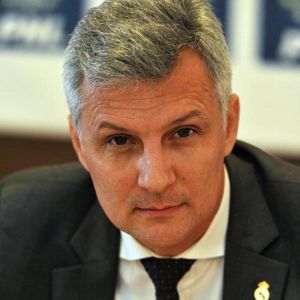Russian President Vladimir Putin's publicly expressed anger at Alexei Smirnov, the governor of the Kursk region, after the invasion of that area by the Ukrainian armed forces, is well-founded as long as the politruk from the south of the Russian Federation did not know exactly the territory controlled by the enemies, stating that he would have been it is about 480 square kilometers, although in reality Ukrainian troops, tanks and transporters are deployed on an area of 1,000 square kilometers in that region, according to the latest data provided by the authorities in Kiev, but also by Western military experts. Basically, in just seven days, the Ukrainian armed forces managed to conquer an area almost equal to that which the Russian forces conquered in the last eight months in Ukraine. According to the ISW (Institute for the Study of Warfare) Russian forces occupied 1,175 square kilometers of Ukrainian territory between January and July 2024, including areas seized both in the face of prepared Ukrainian defenses and during the Russian offensive in northern Kharkiv region. The fact that now, in just seven days, Ukrainian forces have conquered in the south of the Russian Federation an area almost equal to that conquered by the Russian forces in Ukraine in eight months, shows that the south of the Russian Federation is a region whose defense has been totally neglected for so long local authorities, as well as the Kremlin authorities, especially the Ministry of Defense. This is the only way to explain the speed with which Ukrainian mobile military crews are moving into Russian territory, not consolidating any front line, but trying to occupy as much of the enemy's territory as possible through direct, quick and well-aimed strikes. This despite the anti-tank defense line, 40 kilometers long out of the established 46 kilometers, which Alexei Smirnov bragged to Vladimir Putin that he had built. Smirnov's line of defense has apparently so far proven as fragile as the famous Maginot Line, which failed to stop German tanks advancing on Paris at the start of World War II in June 1940.
The fact is that Ukrainian troops, using equipment received from NATO member states, which are technically superior to the equipment used on the ground by Russian forces, are making daily gains, increasing the area of occupied Russian territory. The use of western weapons by the Ukrainians in the repeated attacks in the Kursk region was also noted by Vladimir Putin during the meeting he had with the members of the Security Council of the Russian Federation and the governors of the areas bordering Ukraine. The opinion of the Kremlin leader that the Ukrainian attacks on the Kursk region were launched on the advice of US military experts, may have a grain of truth if we read between the lines the statements of John Kirby, the state adviser for national communications security, two days ago from Washington, who said: "We continue to talk with our Ukrainian counterparts about these operations." Unfortunately, the American official did not provide further details, although he was asked by the journalists present at the press conference, and said that the authorities in Kiev are the most entitled to provide details regarding the military operations carried out on the territory of the Russian Federation.
During this time, FSB representatives detained two people - a man and a woman, who were employees of a military unit in the Southern Military District (SMD), on suspicion of treason and transfer of information to the Ukrainian Ministry of Defense. The FSB intercepted email correspondence between the employee in question and a representative of the Main Intelligence Directorate of the Ministry of Defense of Ukraine. In a press release cited by Izvestia, the FSB states: "Acting on instructions from the Ukrainian side, the woman entered service in January 2023 in one of the military units of the Southern Military District, where she collected various types of information about the arsenals , bases and warehouses that are part of the district". The woman's communication devices, which were used to contact the Ukrainian side, were confiscated, and Russian prosecutors opened a criminal case in which the person and her accomplice are accused of treason.
As for the incursion of Ukrainian forces into the south of the Russian Federation, it continues successfully, if we also take into account the fact that among the Russian soldiers captured as prisoners in the area there are also several soldiers who come from the combat units of Vladimir Putin's ally, Chechen leader Ramzan Kadyrov.
According to information obtained from Ukrainian officials quoted by The Economist, The Atlantic, The Wall Street Journal, The Sunday Times, the raids in the territory of the Russian Federation are also supported by electronic warfare (EW) systems, which jammed communications between Russian troops, and infantry fighting vehicles, the Marder, provided by the Germans. Markus Faber, head of the Bundestag's defense committee, said he saw no problem with Ukraine using German-supplied weapons in its current offensive, and Pentagon spokeswoman Sabrina Singh confirmed that the operation in the Kursk region "is in line with US policy".
A senior Ukrainian security official told AFP that the main objective of the offensive is to "stretch the enemy's positions, inflict maximum casualties and destabilize the situation in Russia, as Russian soldiers cannot defend their borders". According to a Ukrainian defense source quoted by The Sunday Times, the aim of the Ukrainian armed forces is to "convince its own citizens, as well as the Europeans and the Americans, that our military still has enough potential to destroy the Russians".
Reserve Lt. Col. John Nagle told the Wall Street Journal that the Ukrainians are aiming to disrupt Russian logistics in the Kharkiv region and capture prisoners for future exchanges with Russian-held Ukrainian soldiers. Ukraine could try to take advantage of this position in the negotiations with Moscow to claim the occupied Ukrainian territories, said several experts quoted by the publication Foreign Policy. One of Ukrainian President Volodymyr Zelenskyi's advisers told the Washington Post: "The offensive in the Kursk area will give us the leverage we need for negotiations with Russia; that's what it's about".
Former Ukrainian Defense Minister Andriy Zagorodnyuk, in a commentary for The Atlantic, outlined five possible motivations for the current offensive: distracting Russian forces from other fronts, especially from Kharkiv; taking the initiative in the conflict between the two states; demonstrating the weaknesses of the Russian army; testing new military tactics; preventing a Russian offensive in new areas across the border.
Despite these strategic goals, a source in the Ukrainian security agencies told The Economist journalists that the offensive may not yield significant results. The source suggested that the intention of the operation is at least to force Russia to withdraw troops from the Kharkiv and Donetsk fronts, where they have made progress.
"They are transferring troops, but not as quickly as we would like. They know that we will not be able to expand the front and expand logistics (in the Kursk region) by 80-100 kilometers per day," commented the official of the Ukrainian General Staff quoted by The Economist.
Several Western military analysts expressed doubt about the decision to withdraw Ukrainian forces from the eastern front to attack the Kursk region. A battalion commander near Pokrovsk told the Wall Street Journal that Russia is advancing in eastern Ukraine and has no problem mobilizing soldiers. An officer stationed near Chasiv Yar told the quoted source that the front line has not changed significantly and he doubts that Russia will move its troops from the east to the Kursk region.
Military experts believe that the success of the Ukrainian offensive will depend on the availability of military reserves - in men and equipment - of both warring parties. They warned that the Russian Federation might react quickly with a missile strike, which is what happened when the Russian air force bombed central Kiev two days ago. In addition, a senior source in the Ukrainian defense sector told The Sunday Times that they expect a massive attack from the Russian Federation with many drones, cruise missiles and ballistic missiles targeting administrative buildings in the main Ukrainian cities , including from Kiev.
We recall that Ukrainian forces launched a massive attack on the Kursk region of the Russian Federation on August 6, 2024. Clashes with Russian troops took place near the settlements of the Sudzhansky district of the Kursk region - Nikolaevo-Daryino, Guevo, Lyubimovka, Zeleny Shlyakh and Sverdlikovo. The Ukrainian armed forces managed to advance unhindered tens of kilometers deep into Russian territory, occupying a vast area where the Sudzha gas measuring station is located - the only entrance for the transit of Russian gas to Europe. Gazprom representatives told the Kommersant publication that the pumping of gas through the pipeline was not stopped, but in the Kursk region the Kremlin authorities instituted a state of emergency, which led to more than 125,000 refugees and almost 200,000 people evacuated. In the days leading up to the Ukrainian attack, the Russians alleged that enemy forces bombed a cooling tower at the Zaporozhe nuclear power plant with two drones on August 11, with the fire later extinguished but the target in need of repairs. The Ukrainian authorities have denied that charge and said Russian forces were to blame for the incident. Rafael Grossi, head of the International Atomic Energy Agency, said the fire did not affect nuclear safety because the Zaporizhe NPP's electrical units were in shutdown mode and the cooling tower was not in operation. According to an IAEA press release, the cause of the fire has not yet been determined. IAEA experts found no trace of the alleged Ukrainian drone at the site, but collected other evidence that is not sufficient to establish a clear cause of the incident.





























































1. razboi
(message sent by nick on 14.08.2024, 06:42)
foarte bine